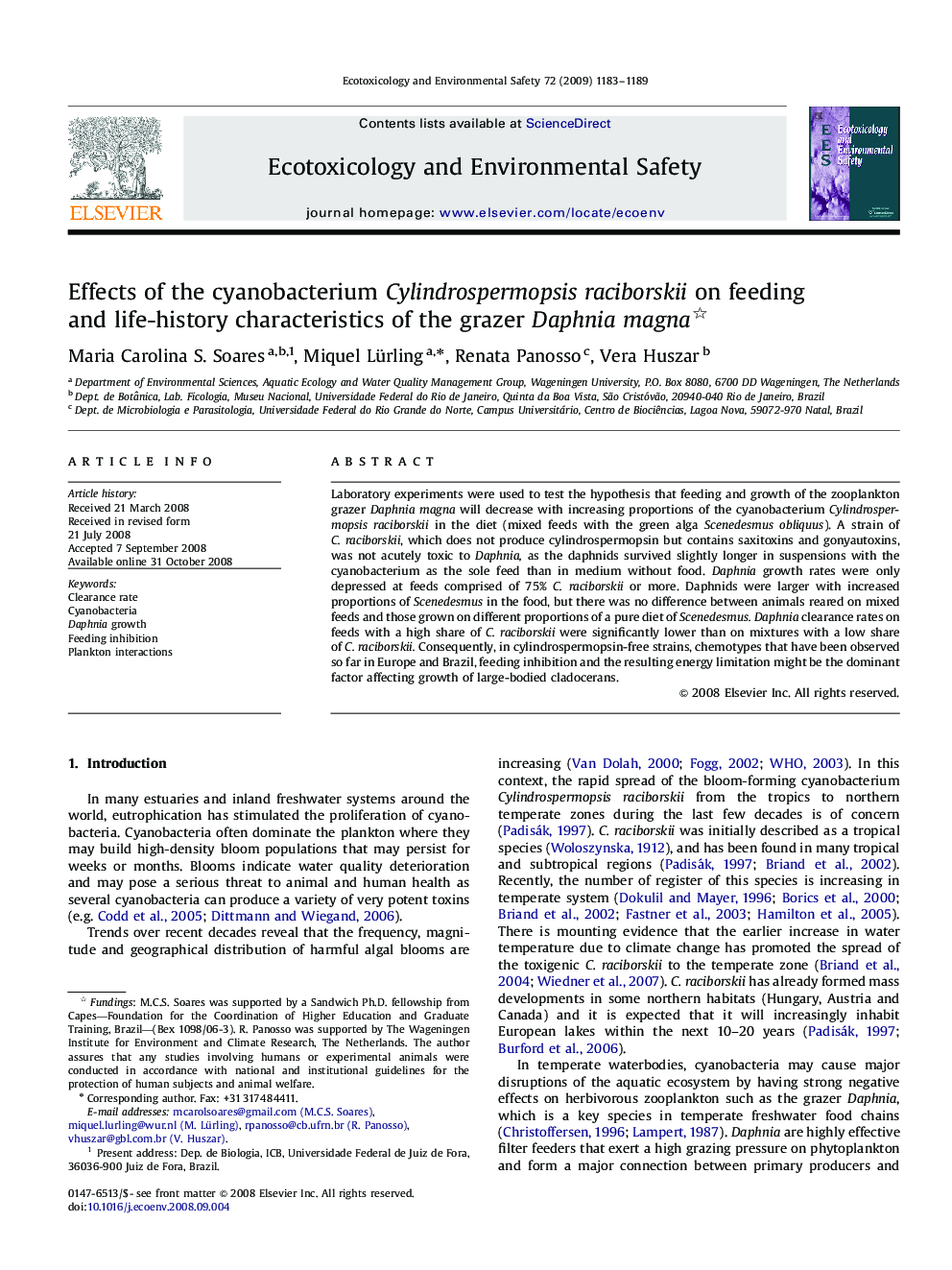| Article ID | Journal | Published Year | Pages | File Type |
|---|---|---|---|---|
| 4421964 | Ecotoxicology and Environmental Safety | 2009 | 7 Pages |
Abstract
Laboratory experiments were used to test the hypothesis that feeding and growth of the zooplankton grazer Daphnia magna will decrease with increasing proportions of the cyanobacterium Cylindrospermopsis raciborskii in the diet (mixed feeds with the green alga Scenedesmus obliquus). A strain of C. raciborskii, which does not produce cylindrospermopsin but contains saxitoxins and gonyautoxins, was not acutely toxic to Daphnia, as the daphnids survived slightly longer in suspensions with the cyanobacterium as the sole feed than in medium without food. Daphnia growth rates were only depressed at feeds comprised of 75% C. raciborskii or more. Daphnids were larger with increased proportions of Scenedesmus in the food, but there was no difference between animals reared on mixed feeds and those grown on different proportions of a pure diet of Scenedesmus. Daphnia clearance rates on feeds with a high share of C. raciborskii were significantly lower than on mixtures with a low share of C. raciborskii. Consequently, in cylindrospermopsin-free strains, chemotypes that have been observed so far in Europe and Brazil, feeding inhibition and the resulting energy limitation might be the dominant factor affecting growth of large-bodied cladocerans.
Related Topics
Life Sciences
Environmental Science
Environmental Chemistry
Authors
Maria Carolina S. Soares, Miquel Lürling, Renata Panosso, Vera Huszar,
